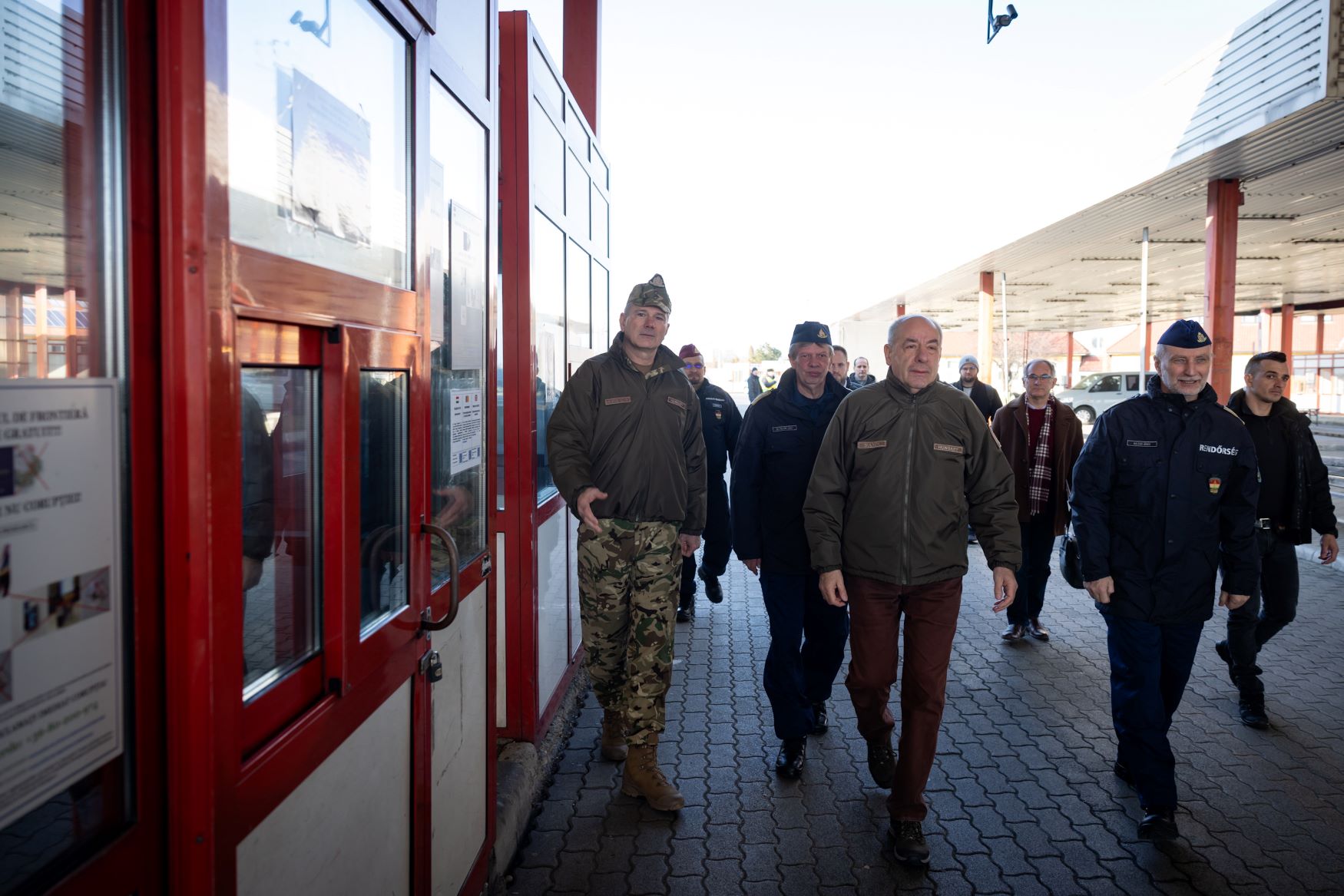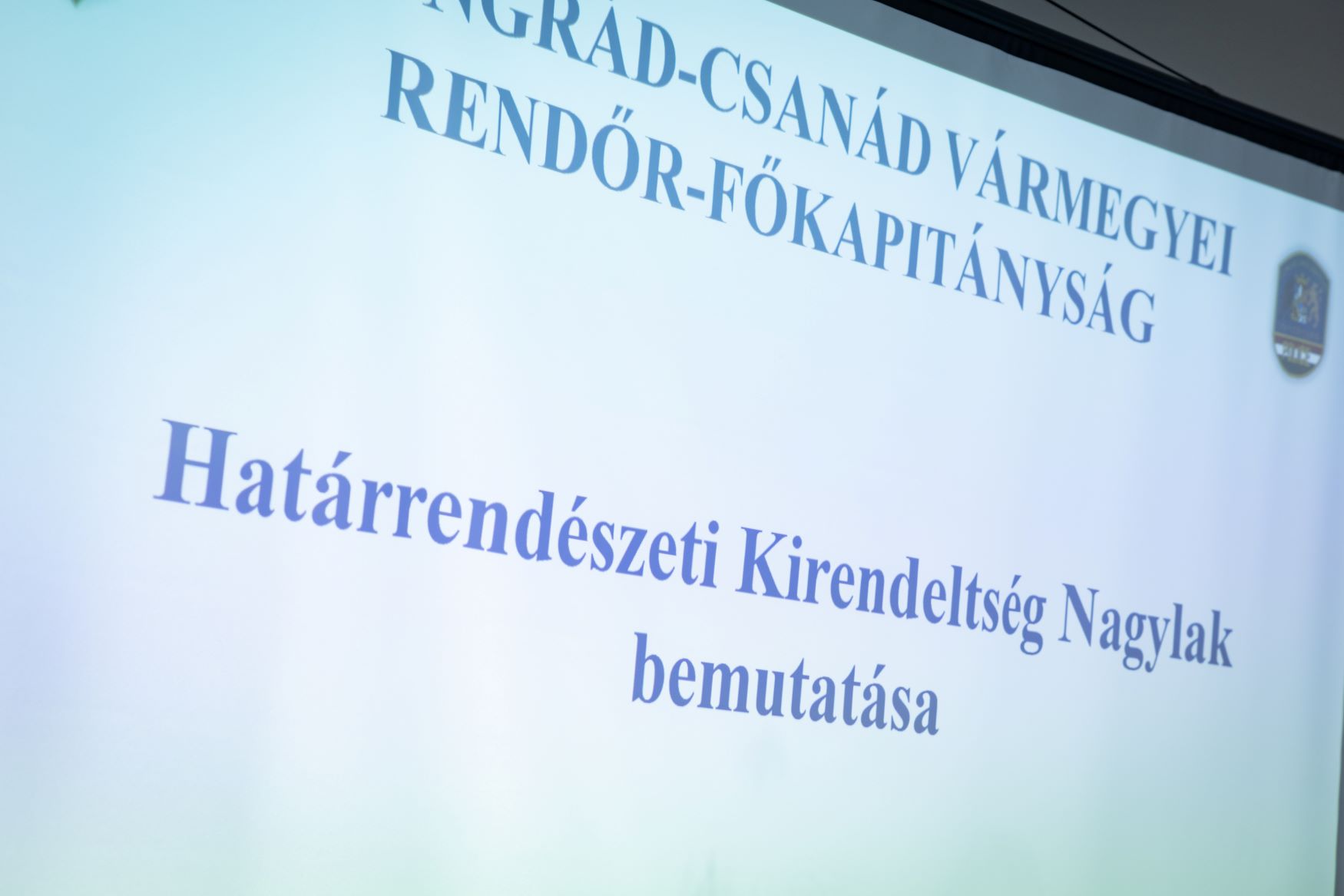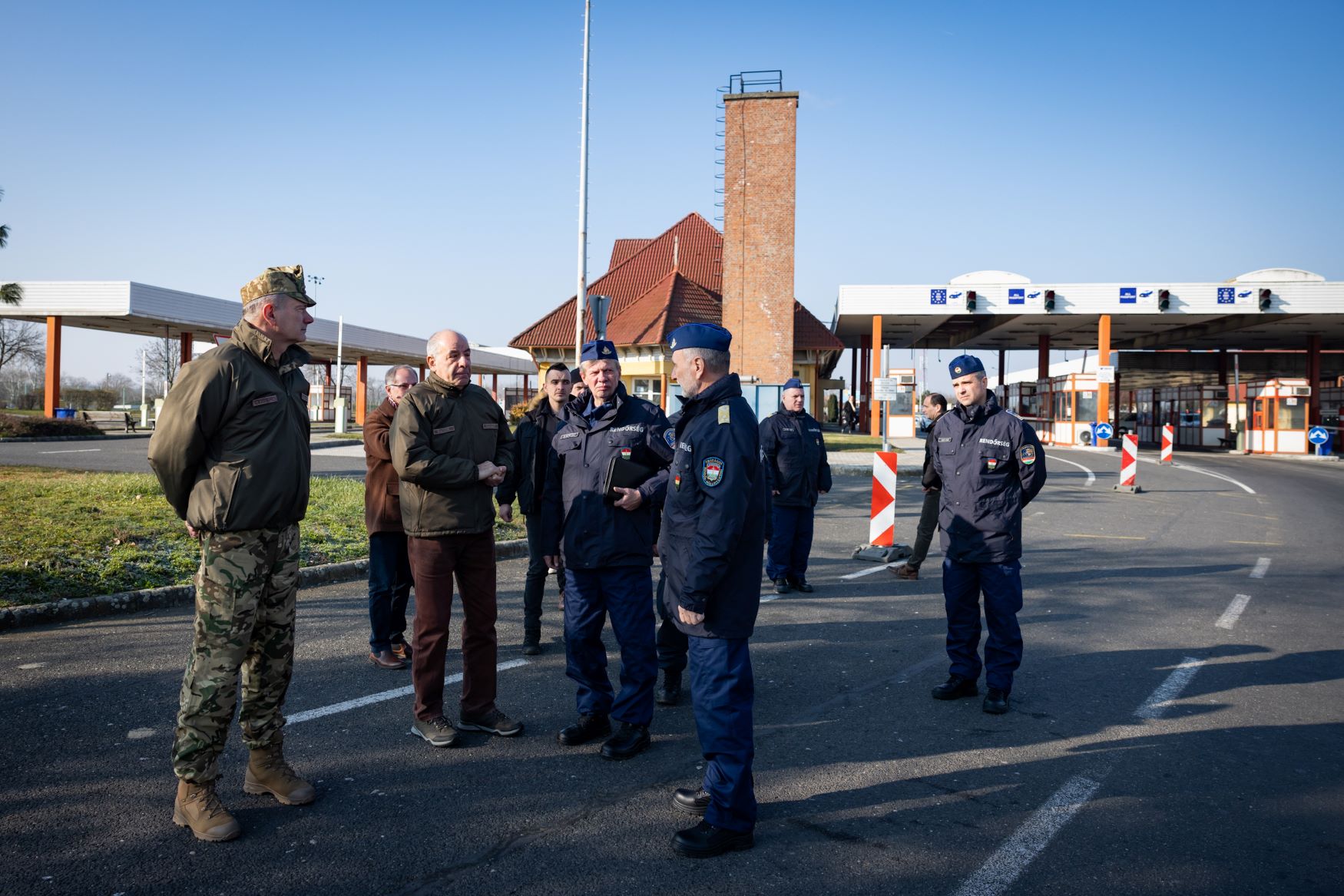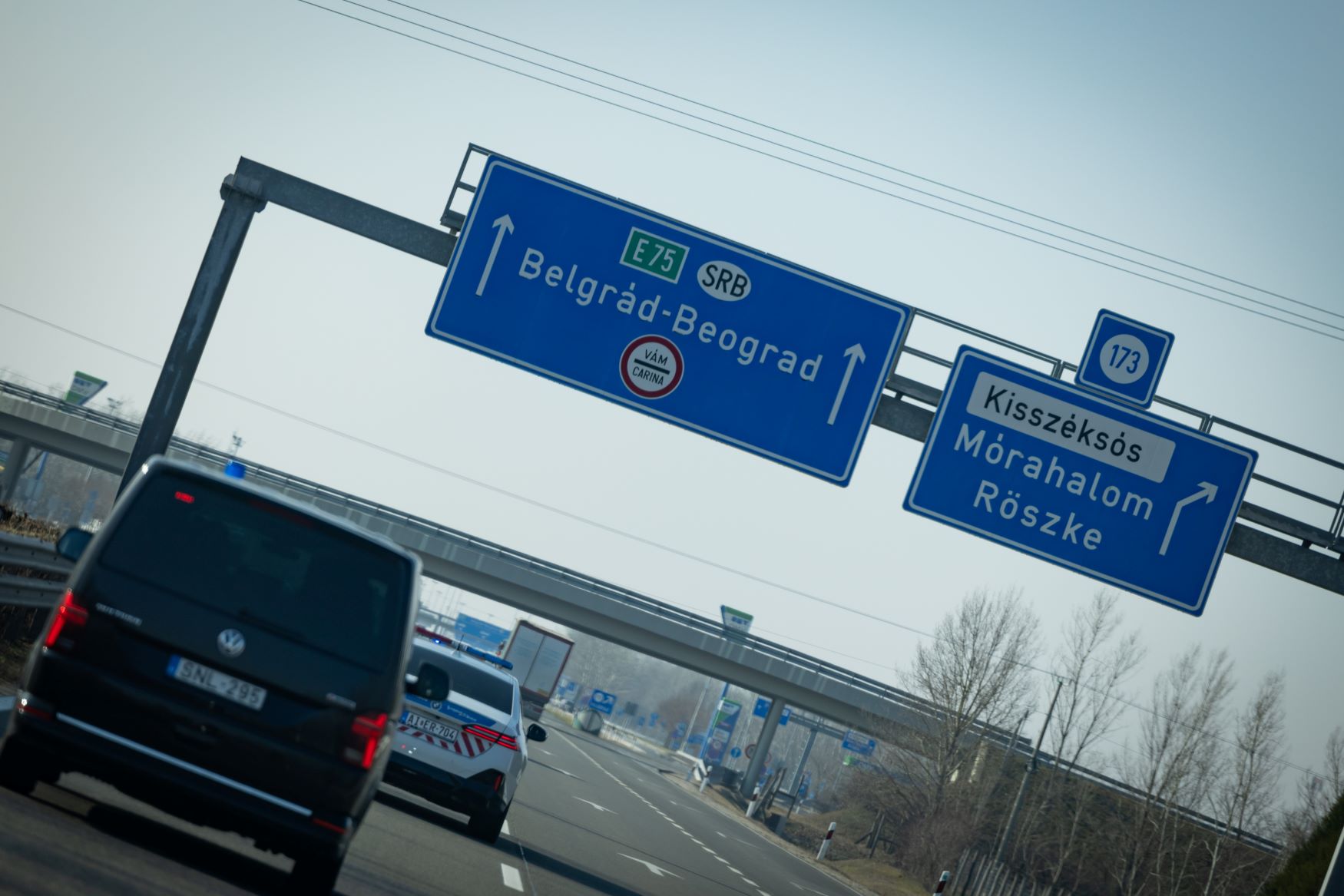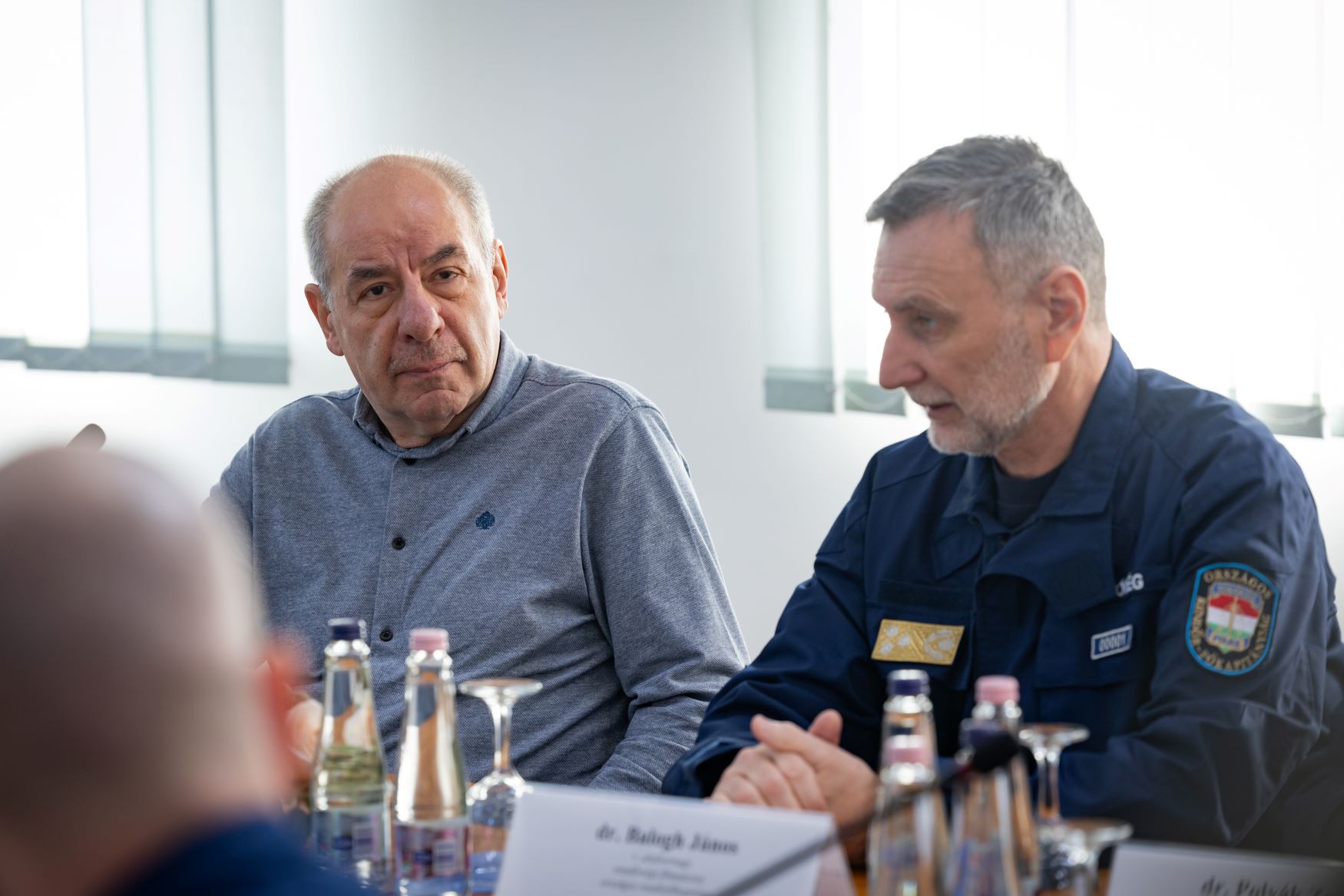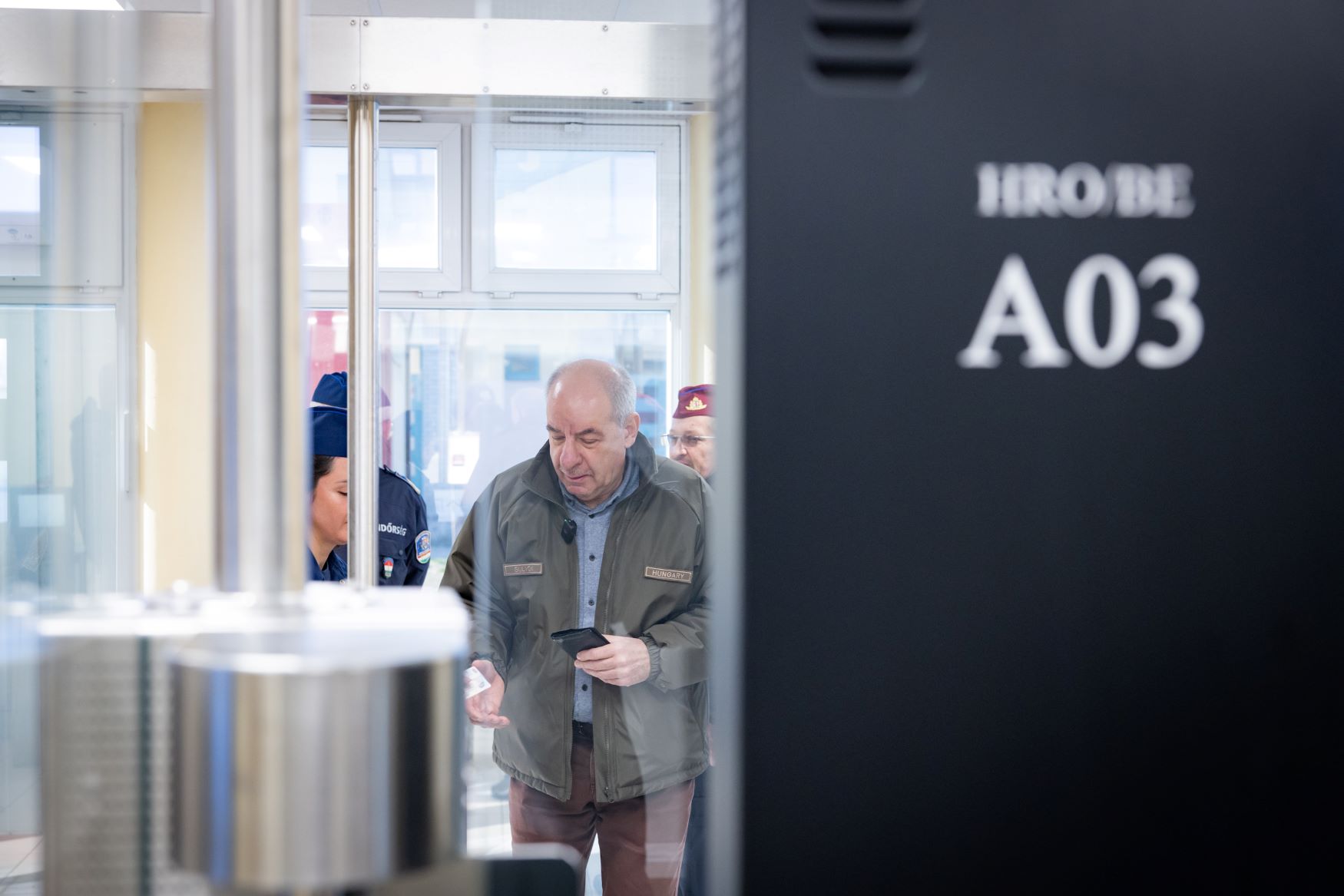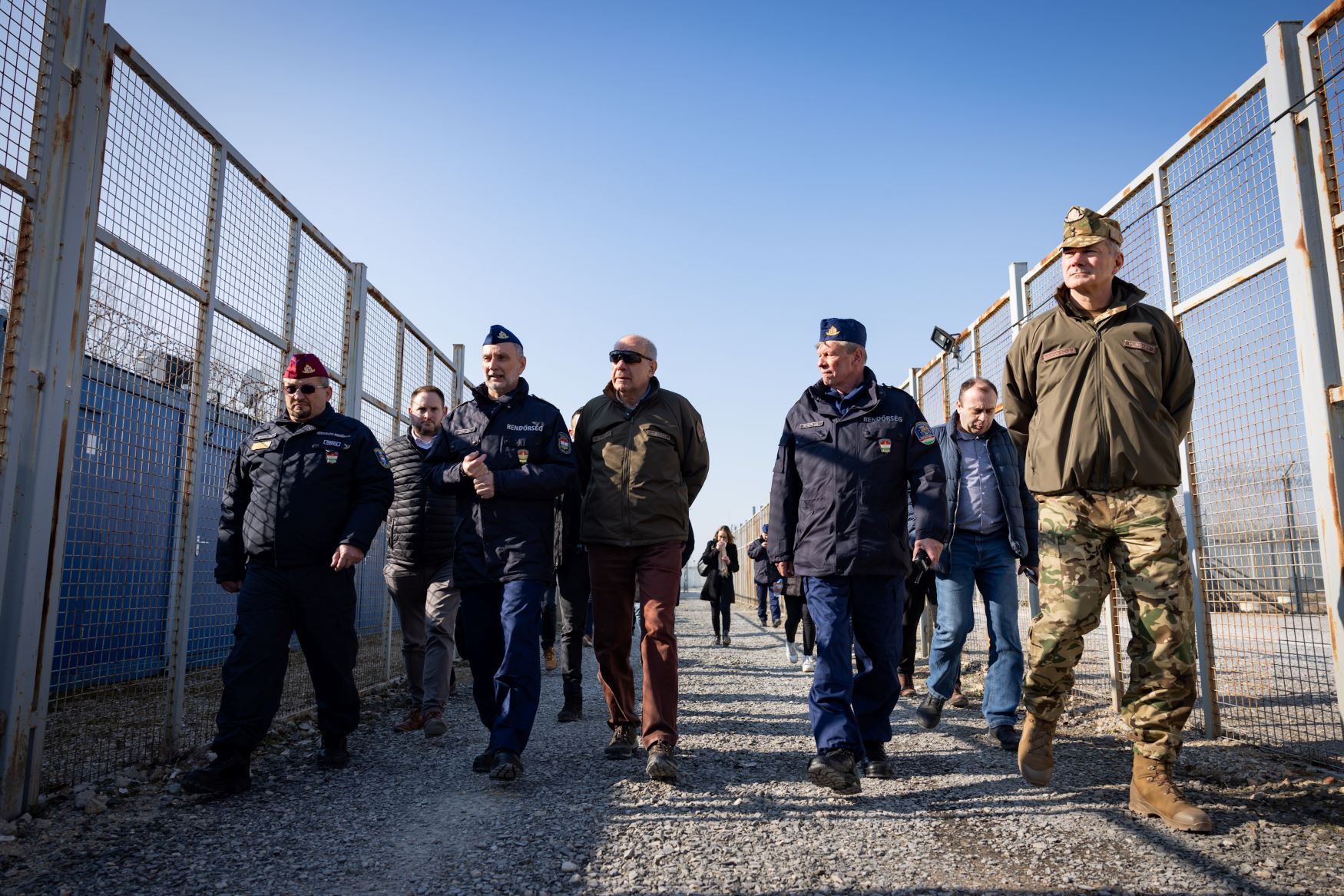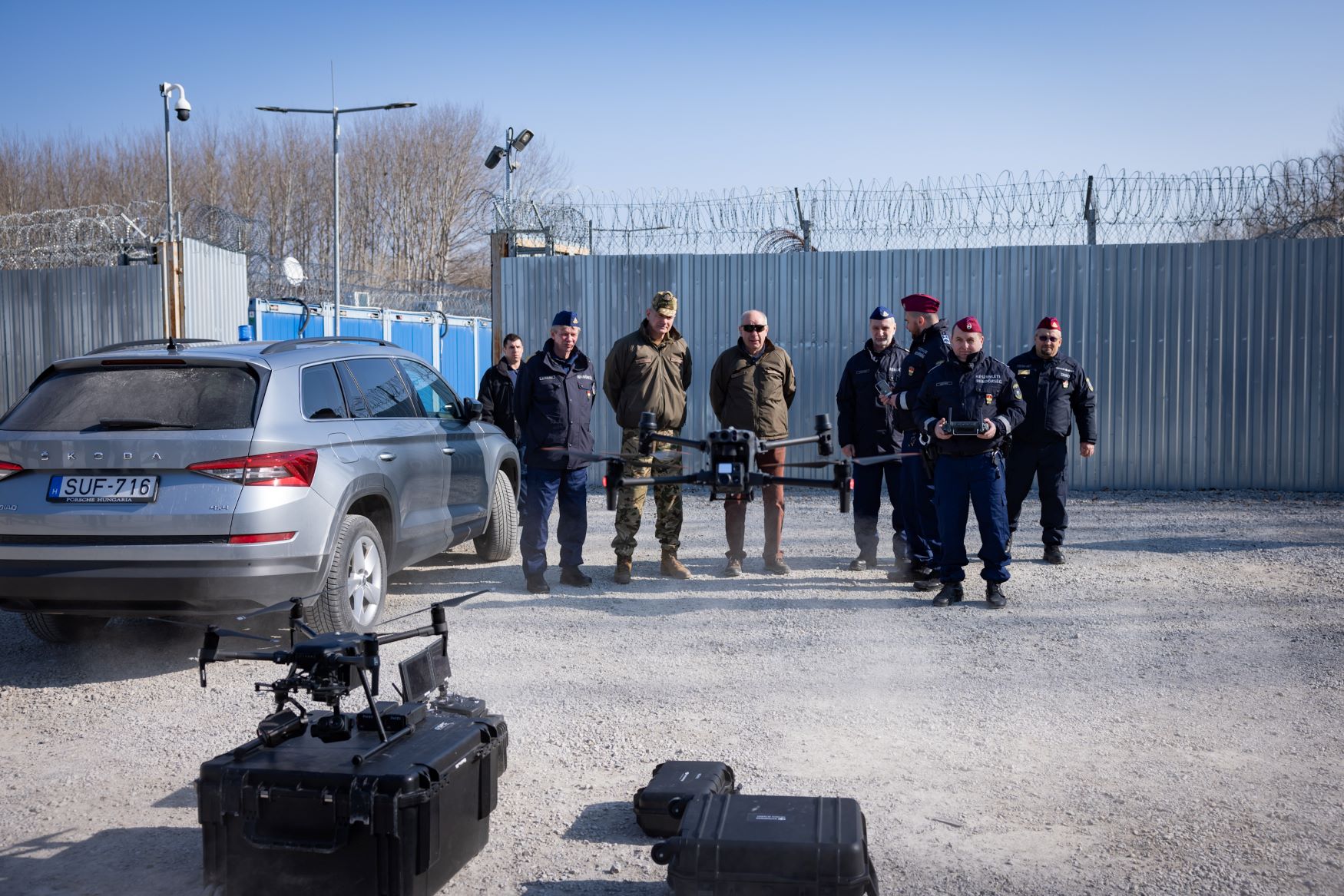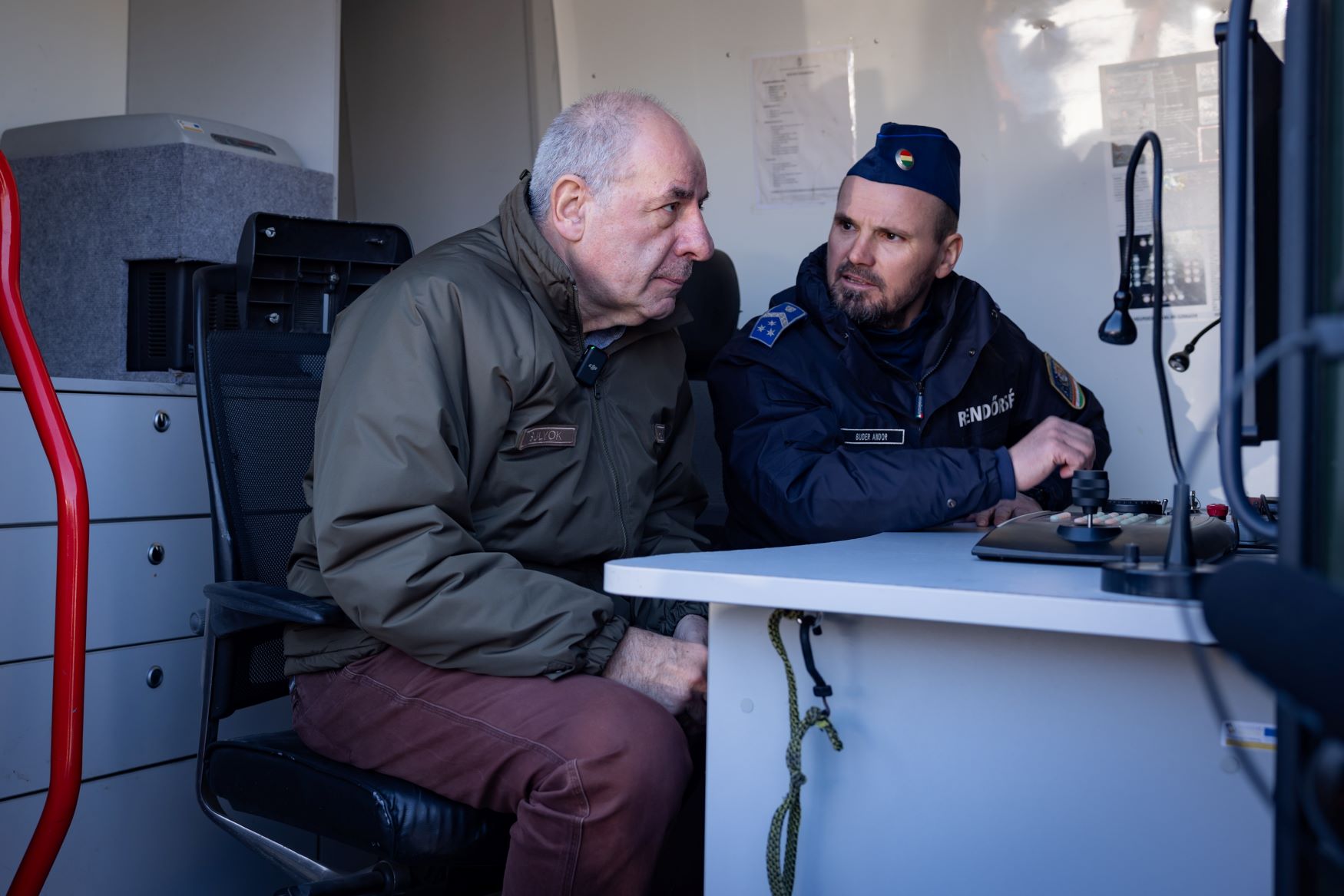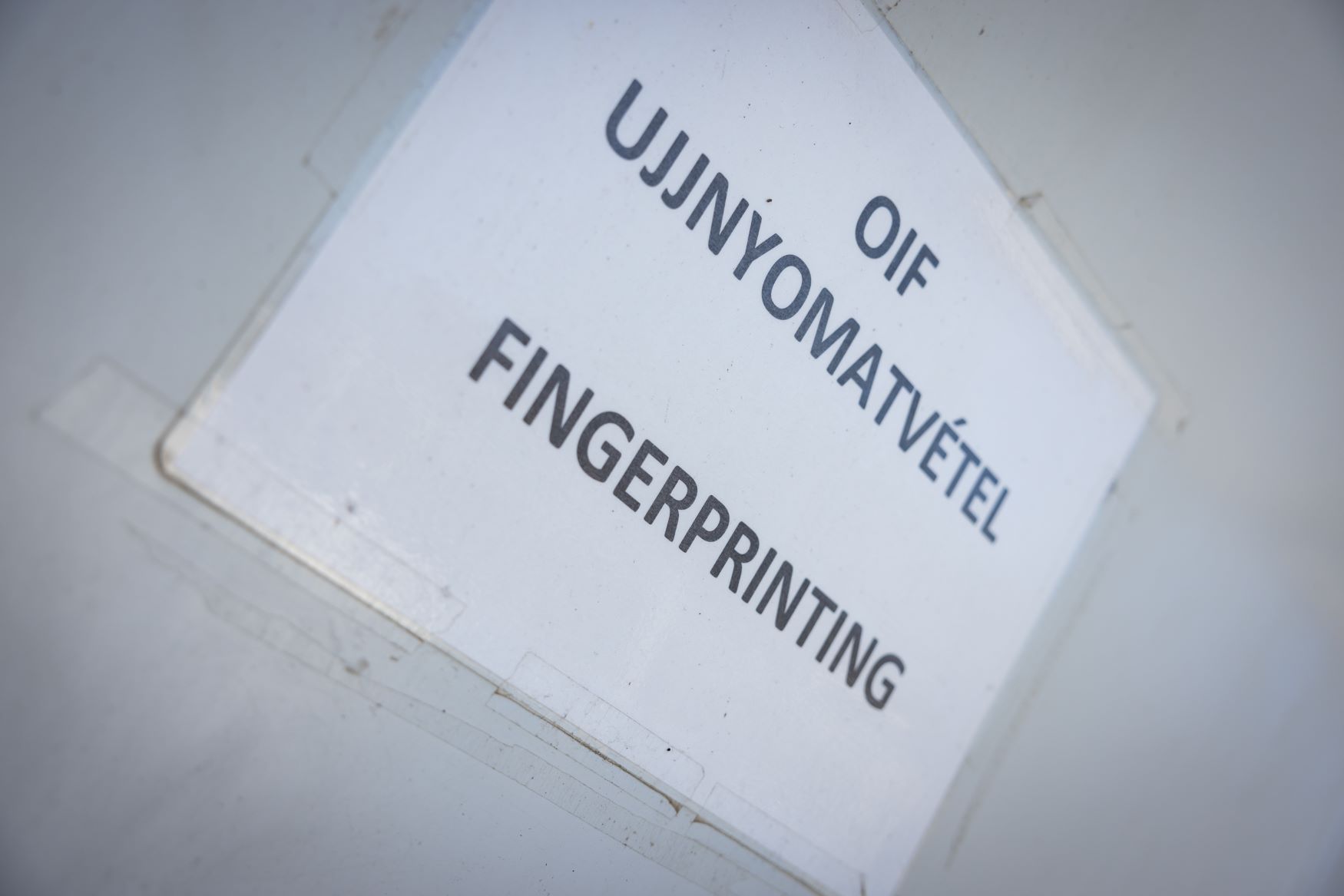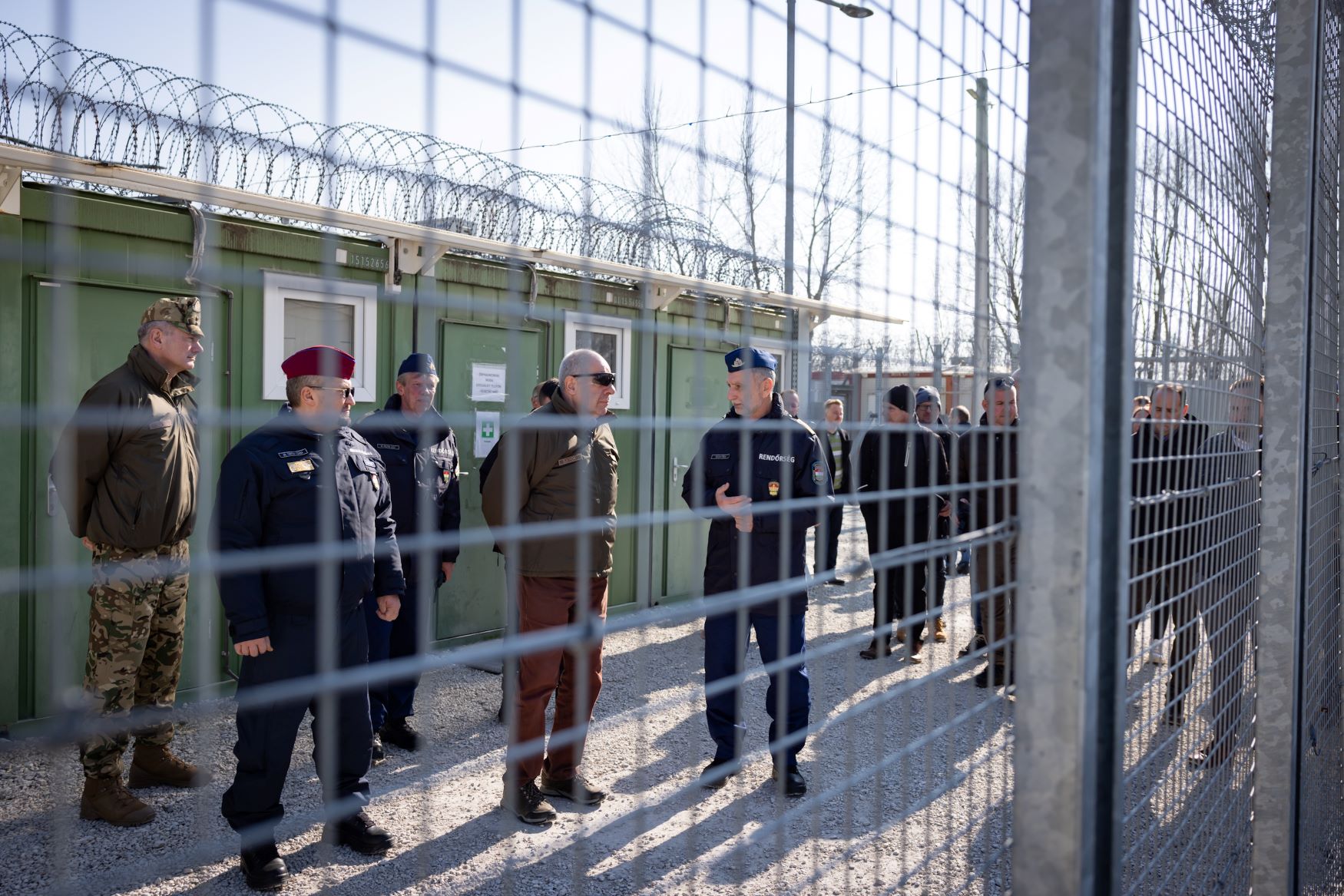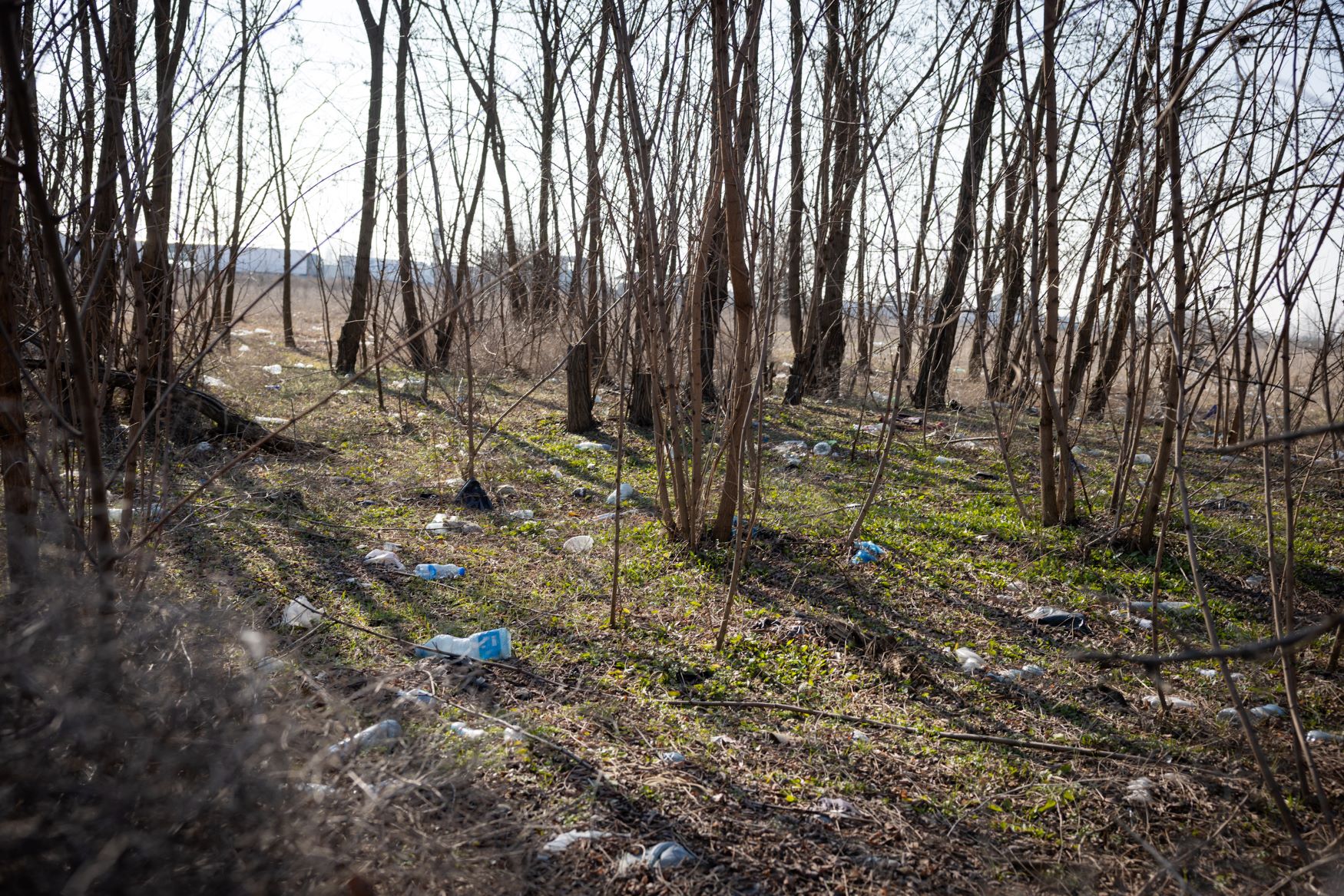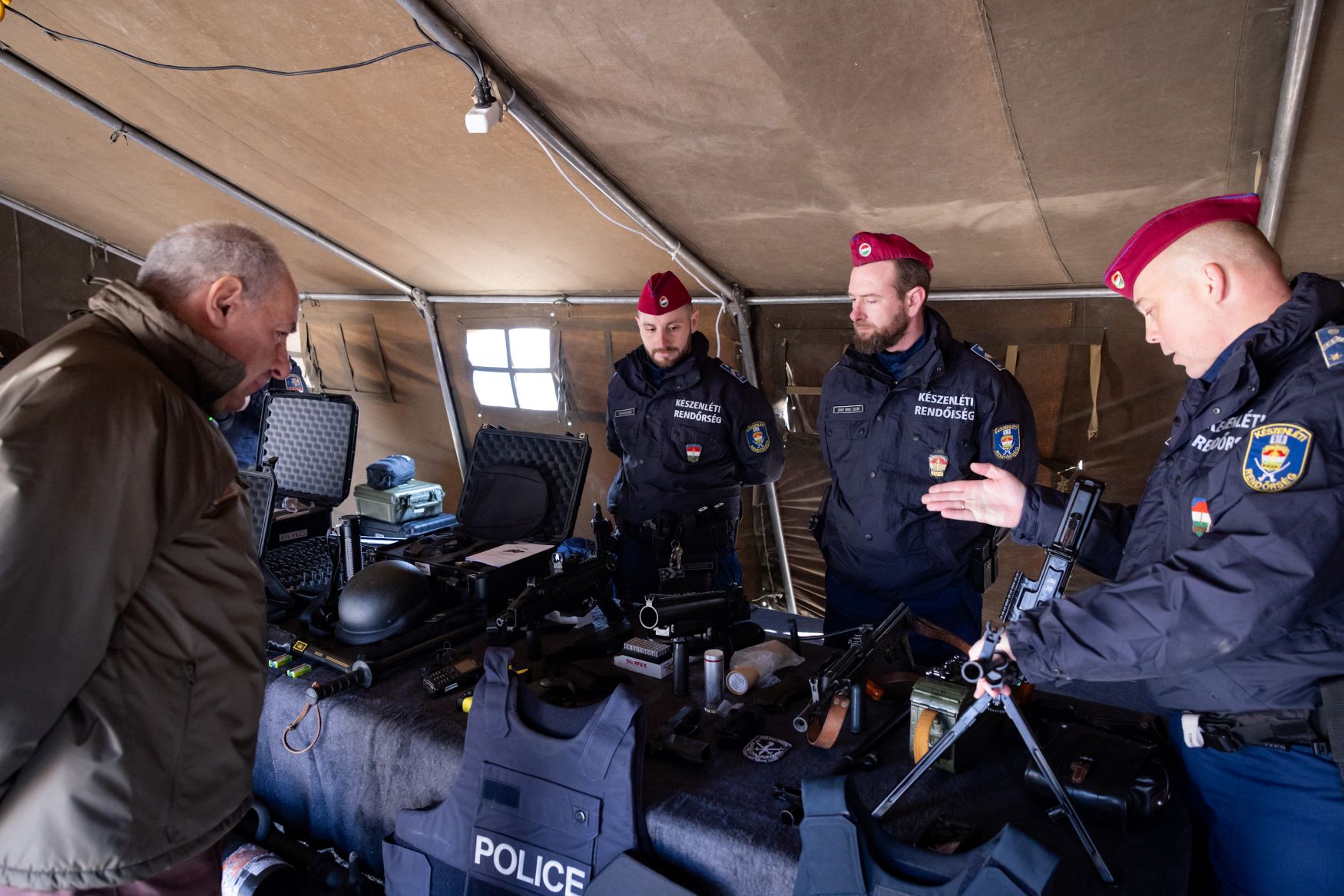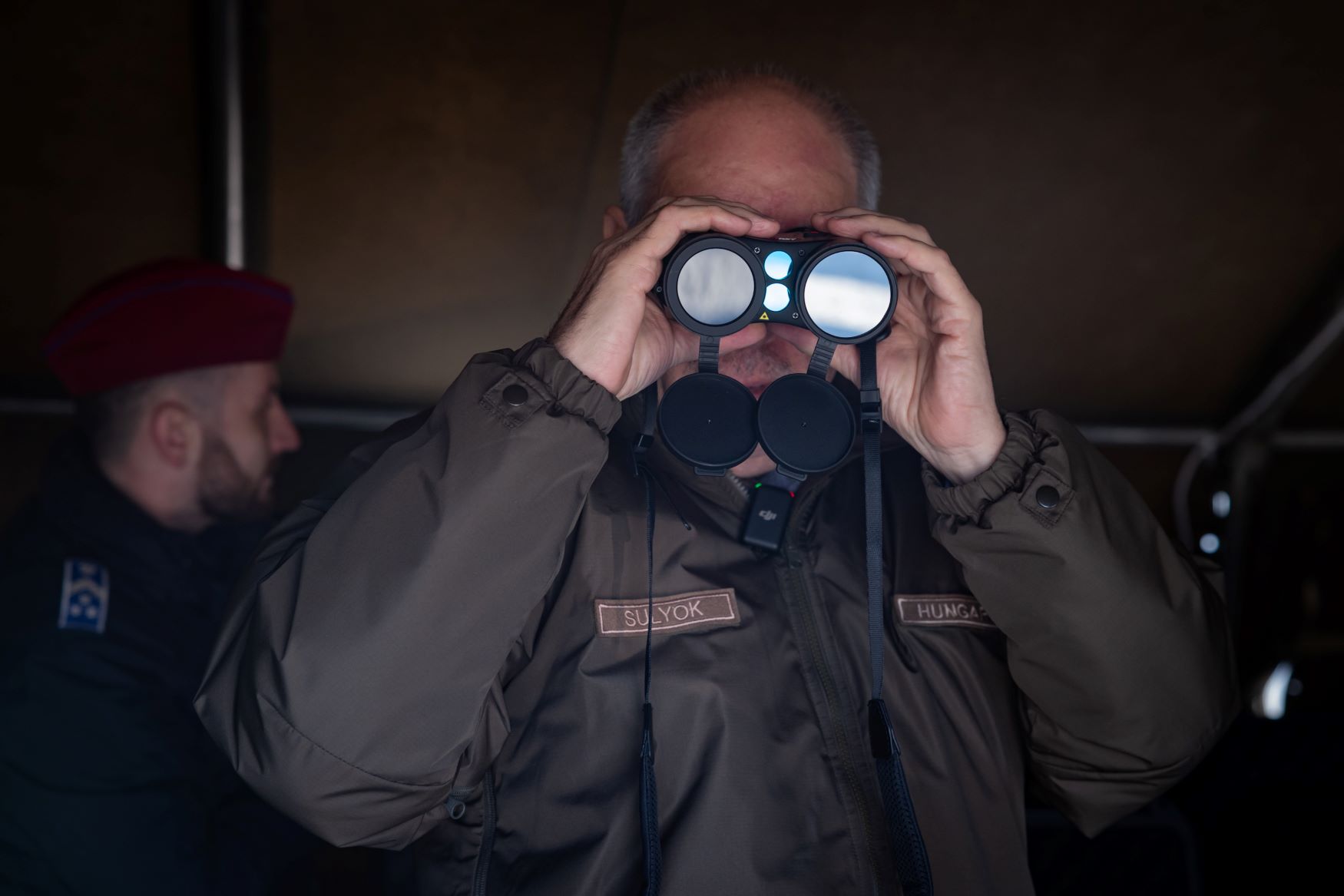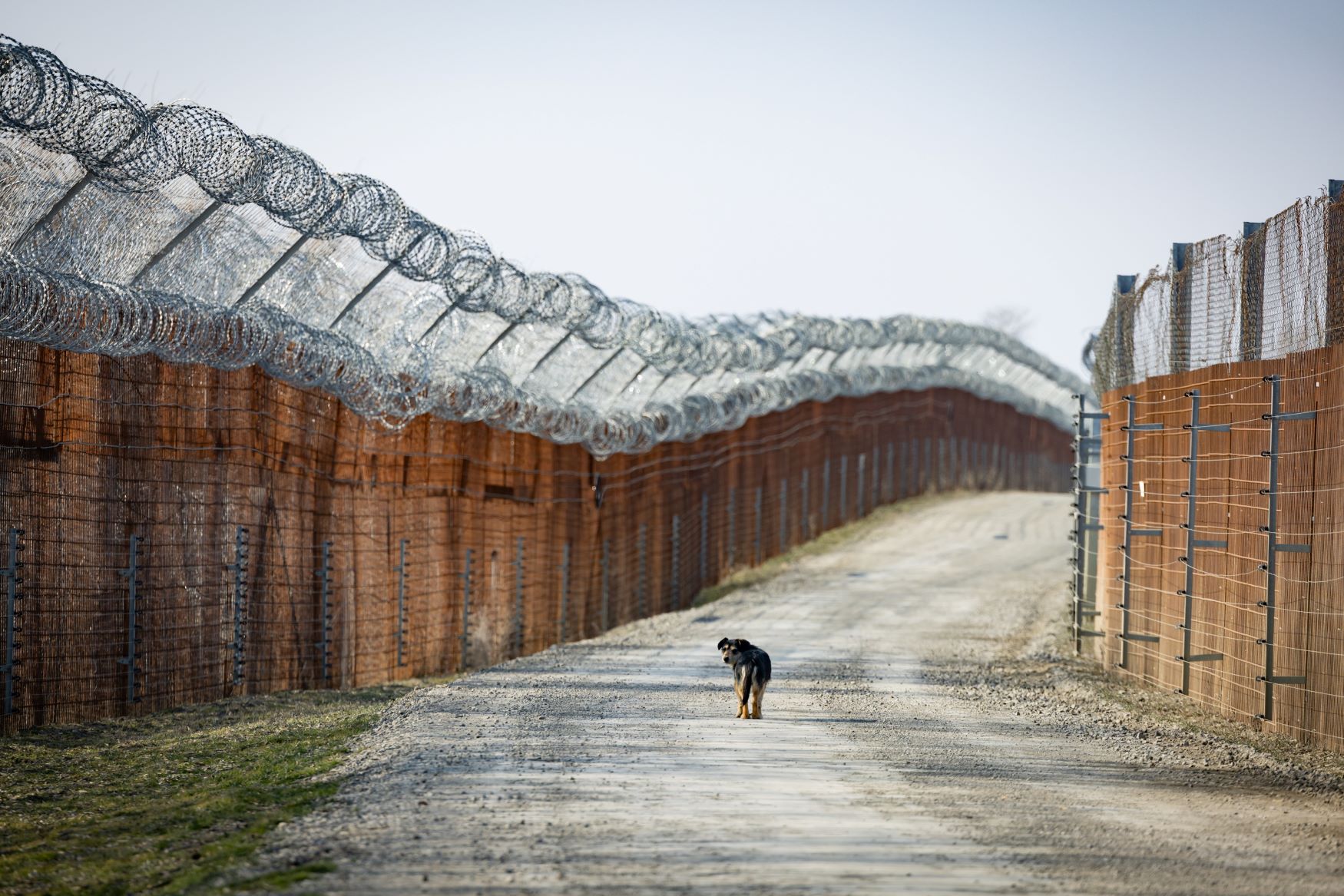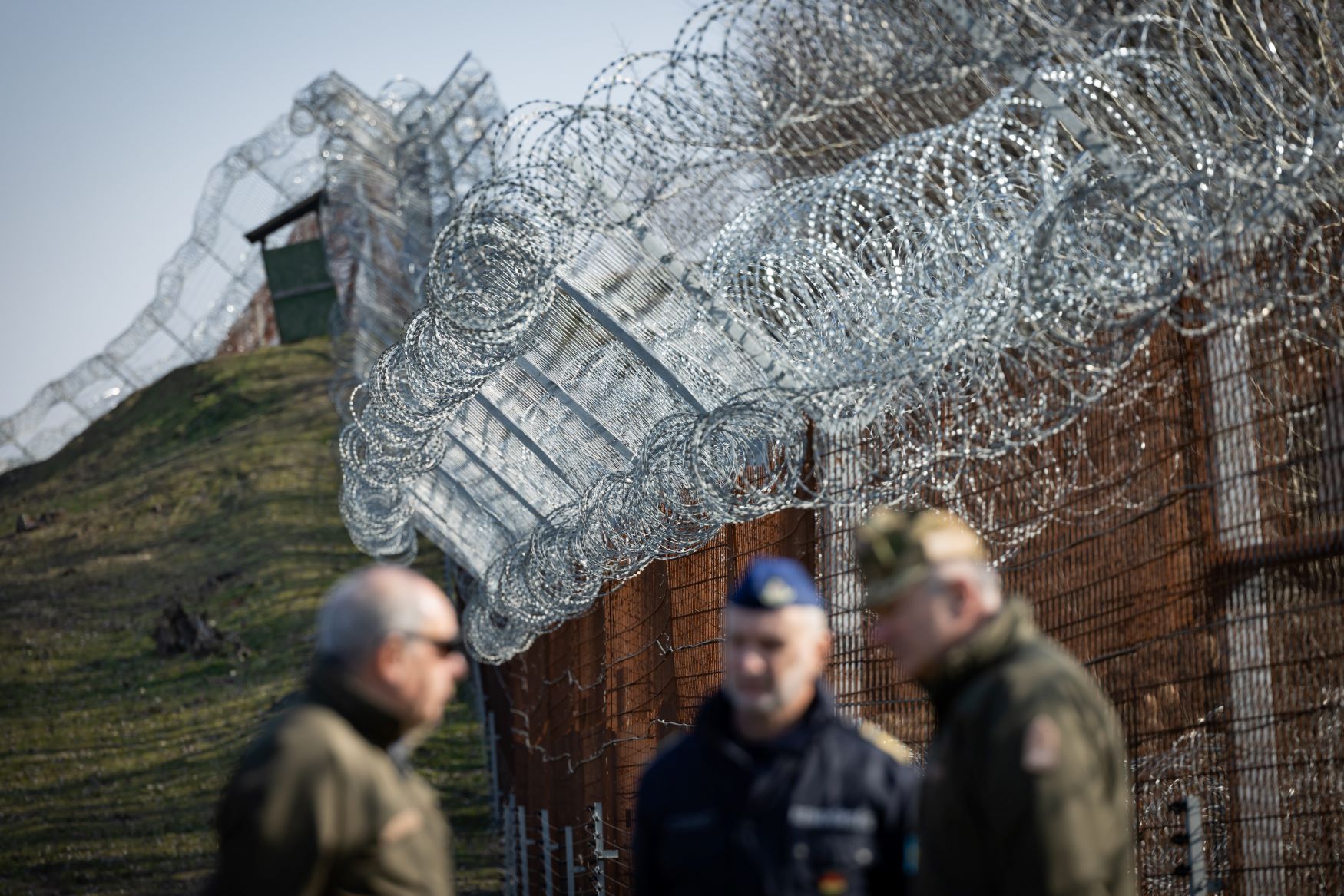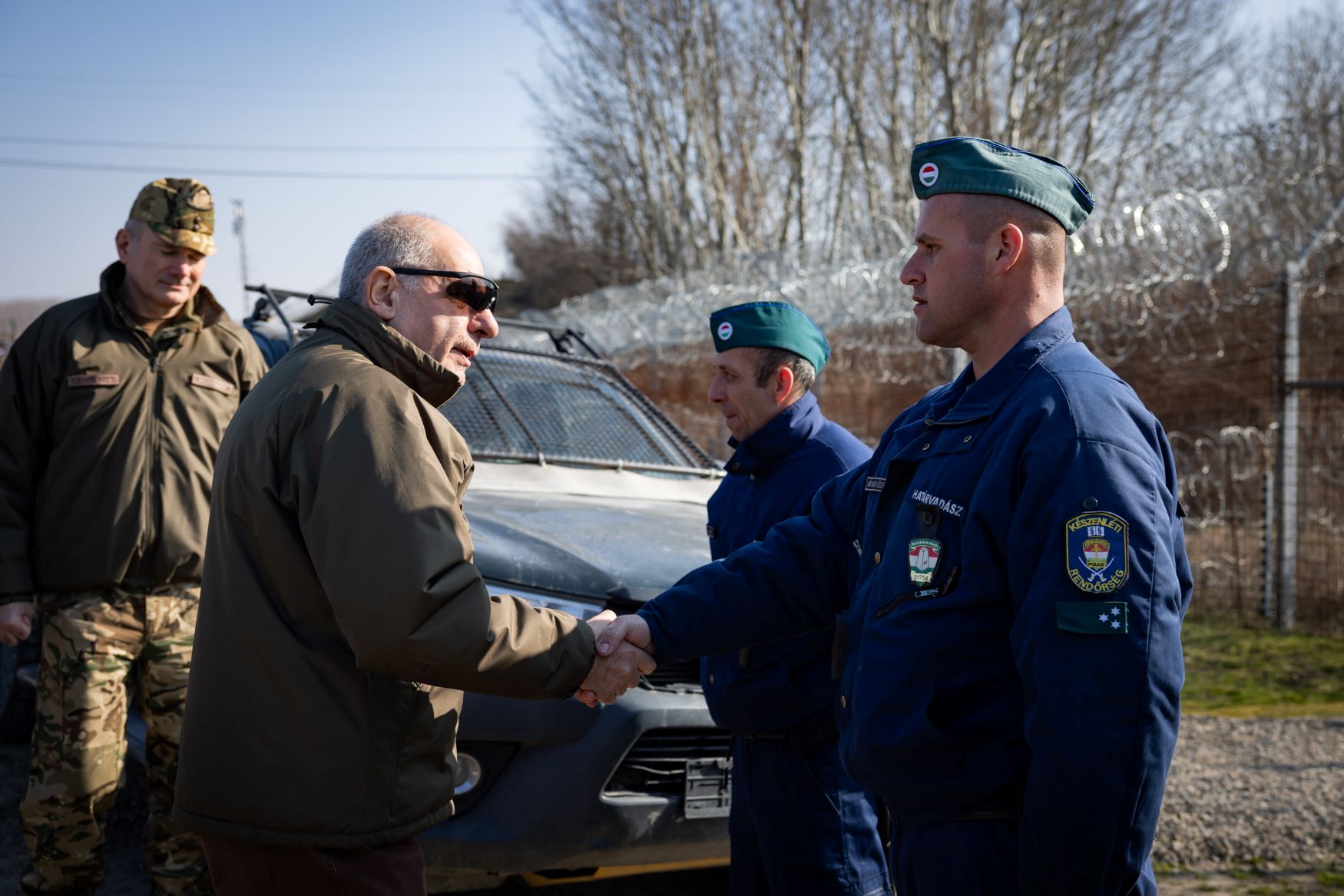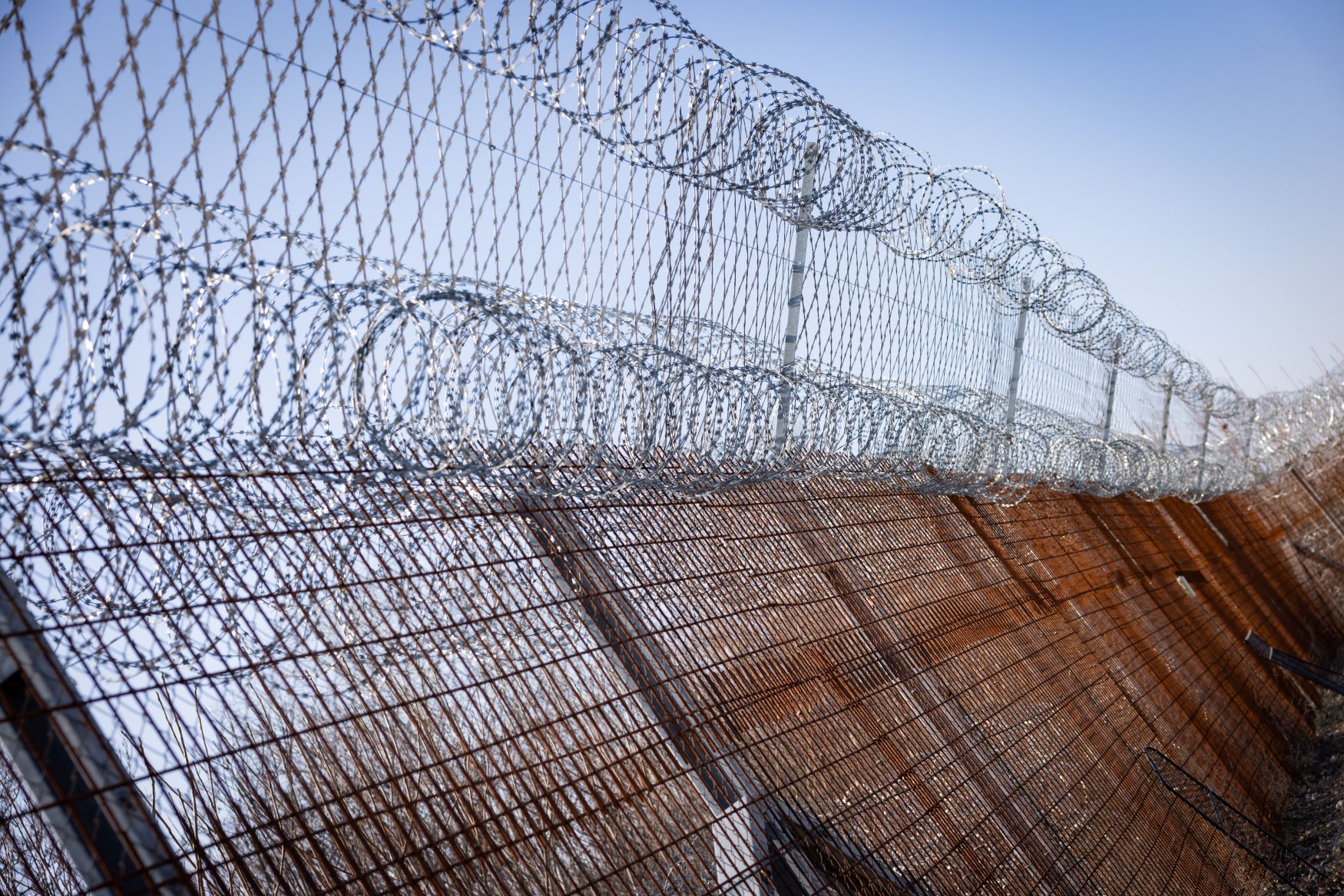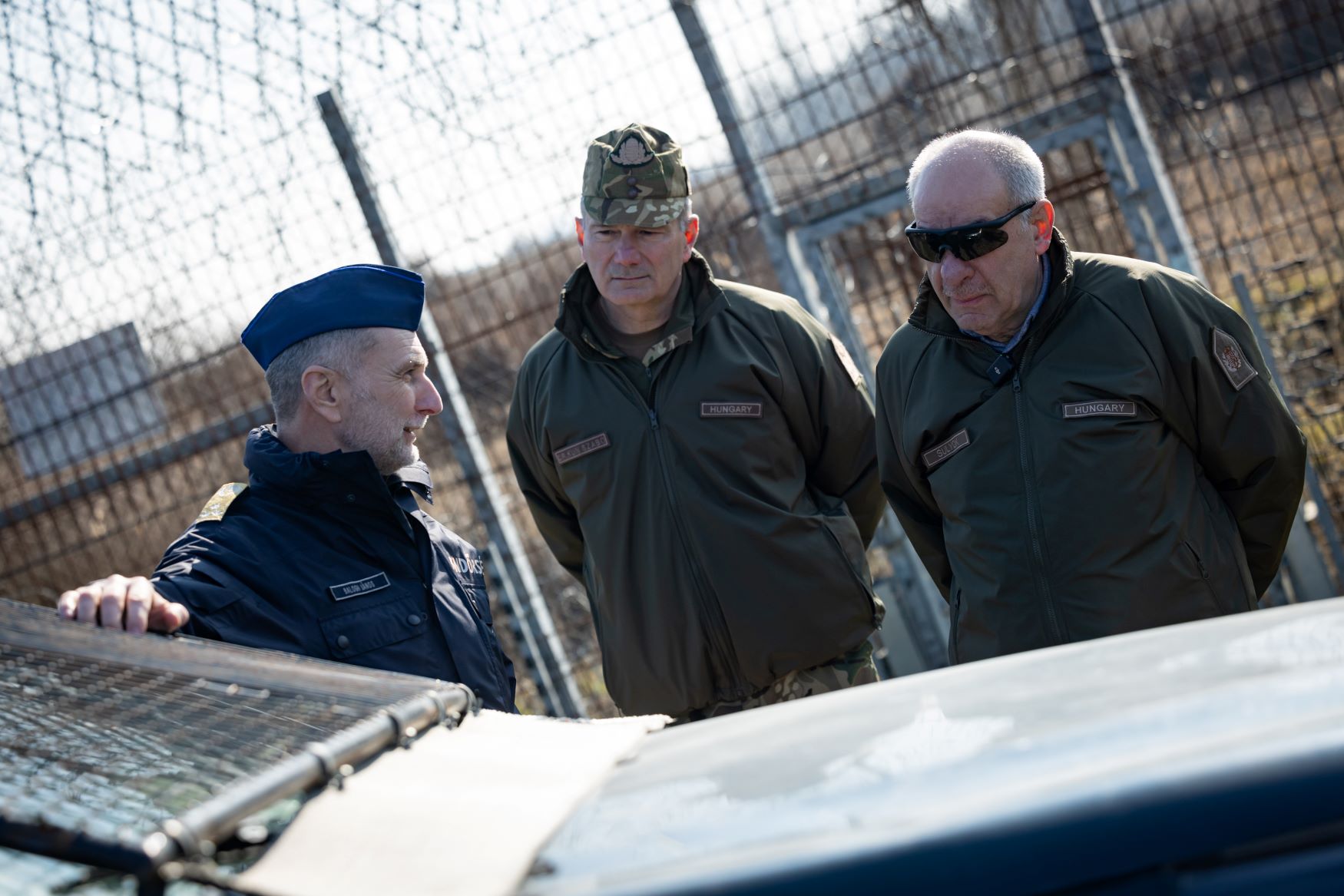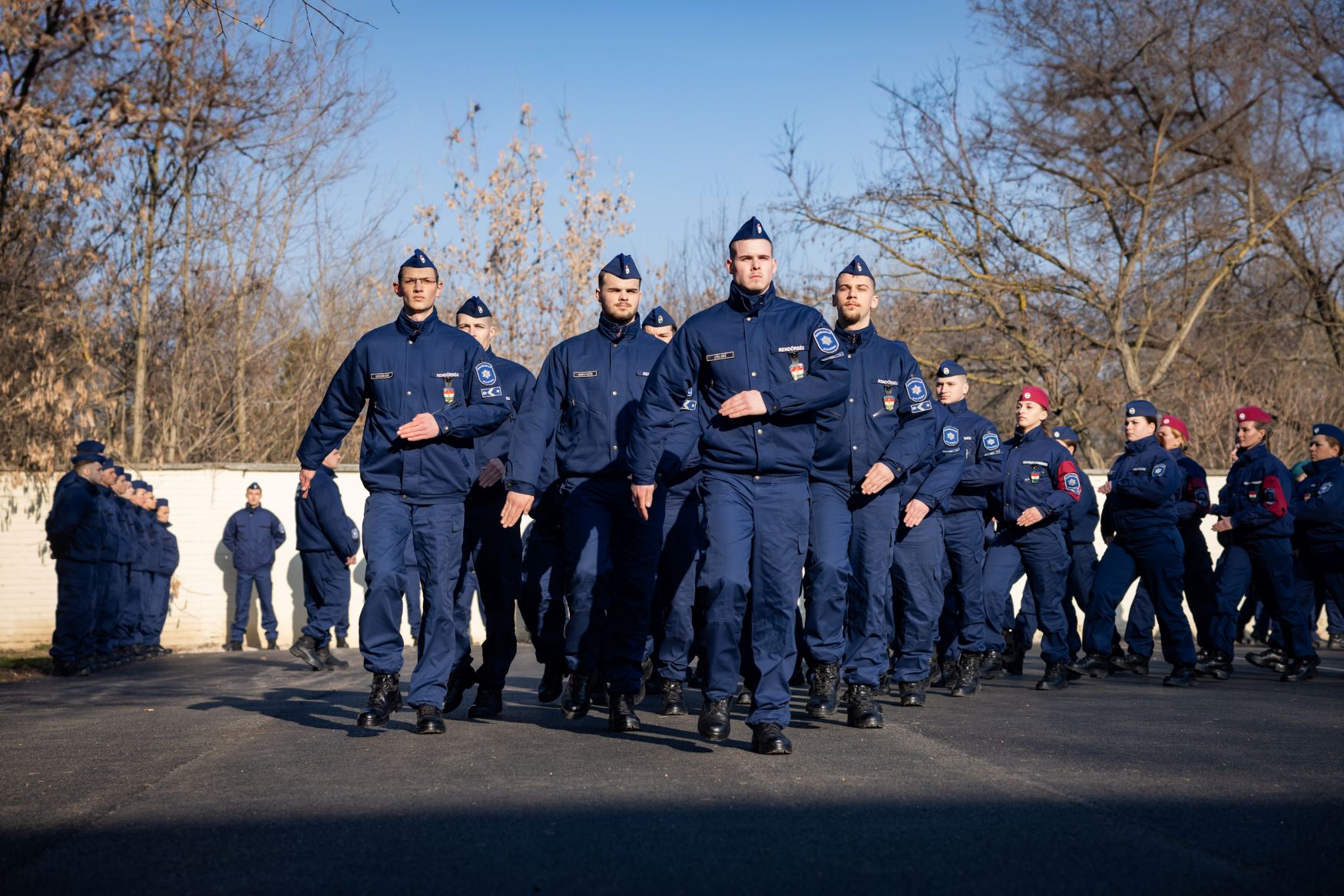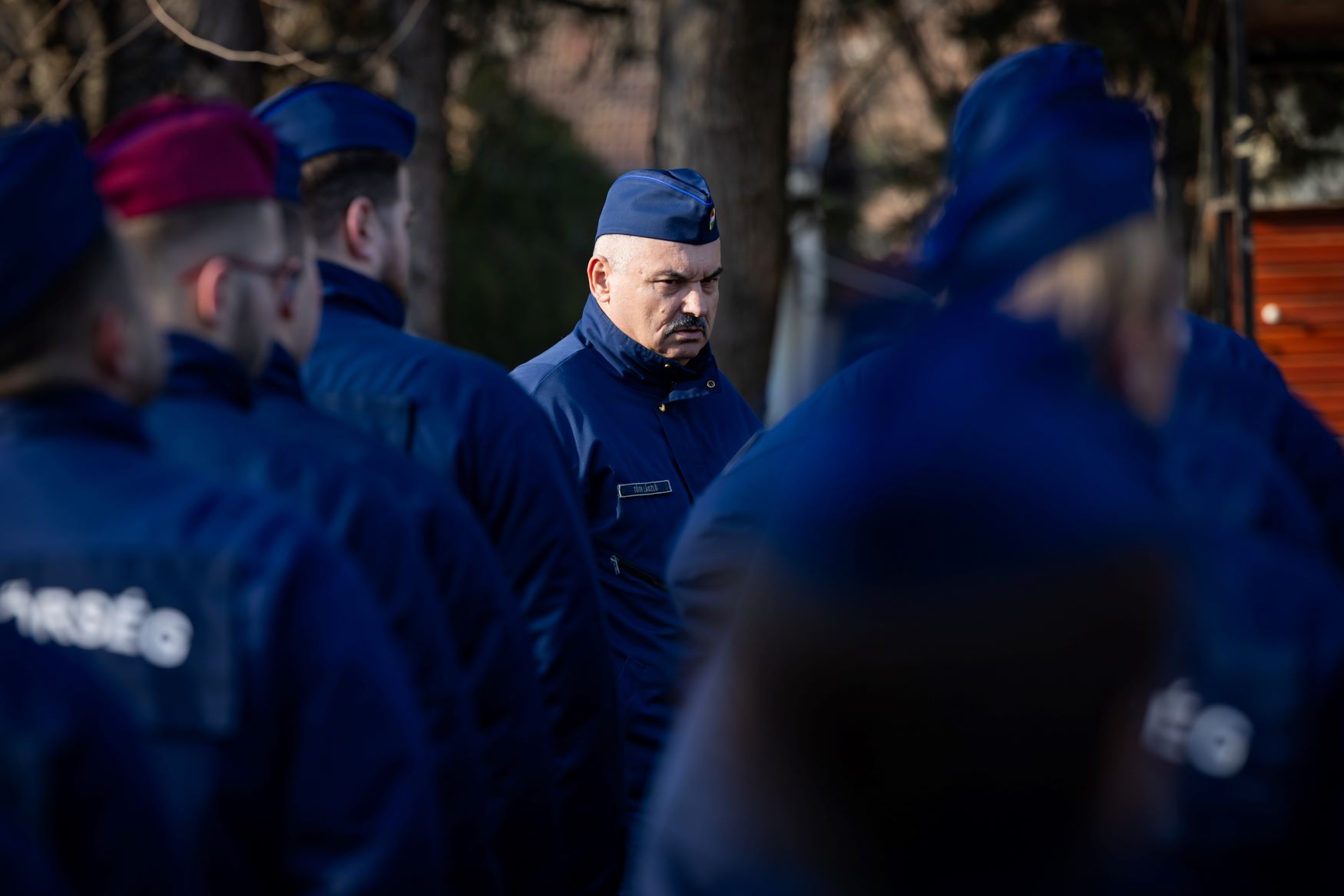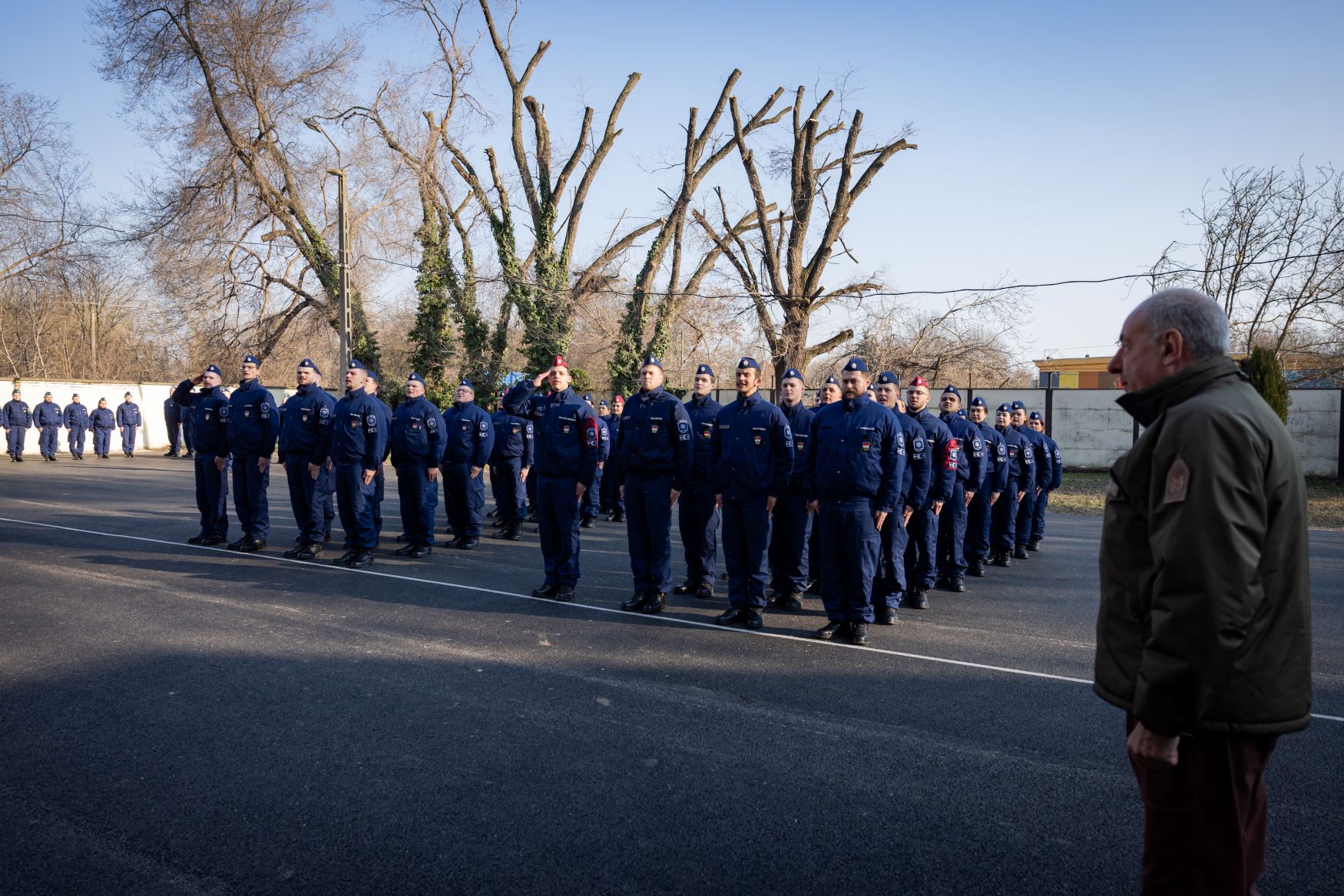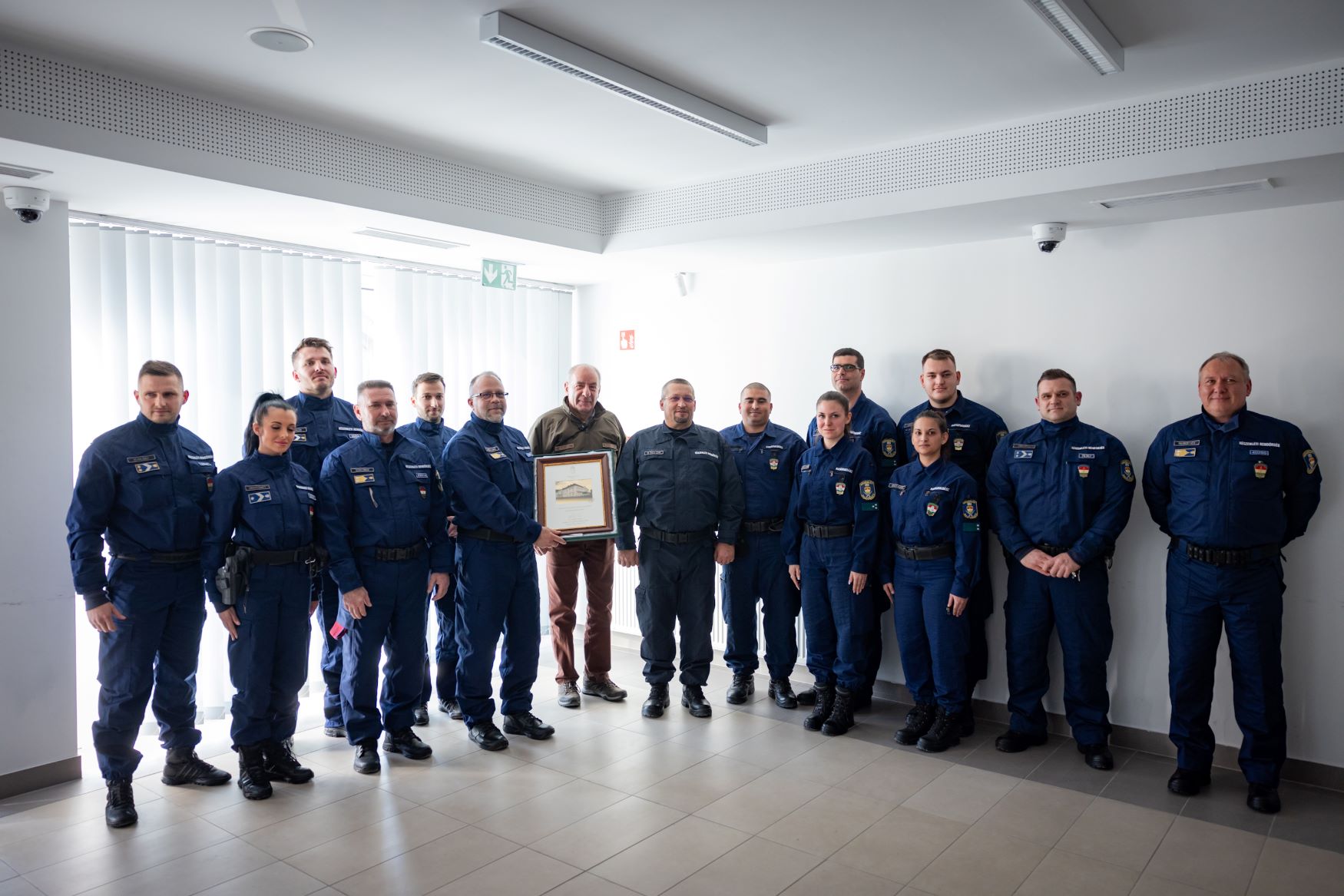Hungary’s Head of State visits the border region - Nagylak, Röszke, Mórahalom, Szeged
Dr. Tamás Sulyok visited the Hungarian-Romanian and Hungarian-Serbian border sections, where he was provided with detailed information and had the opportunity to personally view the practical procedures, tasks and challenges of Hungarian border protection and border control. The Head of State was accompanied by Major General and Chief Aide-de-Camp István Kun Szabó, Lieutenant General and National Police Chief János Balogh, and Brigadier General and Police Chief of Csongrád-Csanád County Zsolt Polyák.
The President of Hungary first met with the heads and staff of the Border Police in Nagylak, who reported on how the Nagylak branch has been reorganised following Romania's accession to the Schengen area. Some of the 111 former staff members are currently carrying out in-depth control tasks together with their Romanian counterparts, while the others are assisting the Szeged Border Police Station and participating in other areas of police work. János Balogh, National Police Chief, said that the essence of the in-depth control is the targeted but flexible execution of tasks. He added that cooperation with their Romanian partner organisations is exemplary.
The next stop of the presidential visit was Röszke, where Lieutenant Colonel Gábor Szécsényi, Head of the Szeged Border Police Station, briefed the President. The 61-kilometre-long Hungarian-Serbian border in Csongrád-Csanád County is protected not only by the Police Station’s own 300-strong staff but also by additional units from the Rapid Response Police, the Police Station, and border patrol companies. They are also assisted by community patrol guards and field guards, as well as Austrian and Turkish police forces. The technical means to reinforce border protection include fixed thermal cameras, a surveillance system of more than 200 cameras installed at the temporary security border barrier, wildlife cameras, mobile thermal cameras and drones, and patrol boats on the Tisza river section.
After the border barrier was erected, the human smugglers tried digging tunnels, but later on, ladder climbing became the norm, and illegal migrants were transported across the River Tisza. Lately, they almost always try to cut through the fence and attacks on border guards are also a regular occurrence," the lieutenant colonel said. Gábor Szécsényi pointed out that the border crossing station at Röszke is Hungary’s most frequently used border crossing point. In 2024, more than seven million passengers and almost two and a half million vehicles were checked here alone. Since 29% of bus traffic crossing the Hungarian border passes through this area, the document checks for bus passengers are assisted by a modern automated entry system, similar to the one operating at Liszt Ferenc Airport. The high passenger traffic has also led to a number of other technical improvements. The so-called Chameleon mobile document and fingerprint scanner system allows border police officers to check the documents of passengers passing through much more easily and quickly.
In response to the President's question on how to speed up border crossing at the Southern border, the National Police Chief said that the main task is to provide human resources, which will be solved by transferring specialists from other county police headquarters and from the Rapid Response Police. In addition, the border patrol programme will allow the number of passport control officers to be increased, adding the professional staff members who used to protect the green border. Colleagues to be released from the Romanian border will also be of great help, especially during the key holiday seasons, but several border guards have already received training as passport control officers" added János Balogh. The National Police Chief stressed that relations with the Serbian authorities are also good, and work is already underway to introduce the one-stop checkpoint, which is already in operation at smaller crossing points. The documents of passengers entering the country would be checked on the Hungarian side, while the documents of those leaving could be checked on the Serbian side, with both checks being performed jointly by the two countries, i.e. a single stop would be enough to cross the border. In this way, the existing infrastructure could be used more efficiently. In response to requests received from workers from Vojvodina commuting to Hungary, opening hours have been extended at the road checkpoint near Röszke, where a new lane will soon be opened to allow workers employed by large companies in Szeged to cross, subject to pre-registration, the Lieutenant-General said.
Dr. Tamás Sulyok then received a detailed overview from the county heads of the National Investigation Bureau of the Rapid Response Police in Szeged. In addition to the mass illegal migration that started in 2015, human smuggling networks, human trafficking and drug smuggling have also appeared along the border. As the county head of the National Investigation Bureau of the Rapid Response Police put it, "since crime does not stop at the border, we are engaged in close cooperation with the Serbian authorities". Several joint operations have already taken place. The relationship with the police in Szabadka is "more than collegial". Also, there is a constant exchange of information with the Romanian authorities.
The President of Hungary then visited the temporary border barrier and the transit zone, where the technical equipment and electronic systems used by border guard units were presented. In Mórahalom, the President also visited the Border Police's Remote Surveillance Control Centre, where dozens of large screens monitor events at and around the border. This centre is responsible for the operation and management of the camera system linked to the border barrier and for the continuous surveillance of the border area. It manages the information from the various signalling systems installed at the border crossing, which are essential for effective border protection.
At the end of the day, the President of Hungary visited the Police Education and Training Centre in Szeged, where he met with police patrols who were undergoing 10 months of training and were currently doing drill exercises.
In response to questions from the press, the President said: "It was a major experience to go through the technical border barrier. He highlighted that with the technical equipment in place at the border, it is possible to look behind the last tree or bush day and night. The President was impressed by the technical equipment and the extraordinary preparedness of the border patrol units and the border police.
According to Dr. Tamás Sulyok, we can continue to sleep soundly, as our borders are protected by excellent professionals with cutting edge technolgies.


